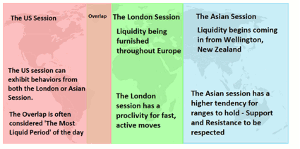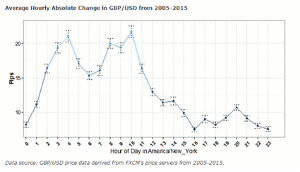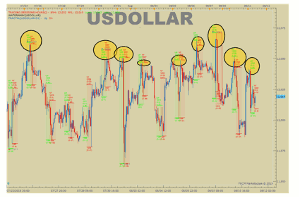Unlike stocks, which are limited to exchange hours, FX trades around the clock, so Tyler Yell, of DailyFX.com, outlines the commonalities of the three sessions—the US, London, and Asian—as well as what to watch for in each in order to help Forex traders prevent from taking low probability trades.
Talking Points:
- Learning the Sessions
- Session Characteristics
- Common Themes for USD You Need to Know
One of the largest benefits of the FX market is that unlike stocks that are limited to exchange hours, FX trades around the clock. Another benefit for the astute traders to learn is the 24 hour trading day can be subdivided into multiple sessions, three to be exact. Once you know the commonalities of the sessions and what to look for, you will be armed with a new and effective form of analysis in order to prevent taking low probability trades.
Try this out: Set up a practice account to see the session affects mentioned in this article here.
Learning the Sessions.

Image taken from Trading the World
Click
to Enlarge
The three key sessions to focus on are in sequential order, Asian, London, and US. Like a Gaussian curve, the middle of the trading day is the height of volatility. As you can see above, London is the belly of the beast with the London / US overlap making up the highest volatility period of the day on average. The key moves that happen during this session will be critical for getting comfortable with moves that have the ability to carry on for multiple days, weeks, or more.
Session Characteristics

Image Taken From: Do the Hours I Trade Matter? Yes, Quite a Bit. By David Rodriguez
Click
to Enlarge
Understanding the characteristics of different sessions is helpful if you’re looking for intra-day opportunities to trade or looking to build a tradable view on a market that you may take action on in the future. Here are the common characteristics of each session:
NEXT PAGE: The Session Analysis You Need to Know
|pagebreak|Asian Session: Range bound markets are common during the Asian session, which favors the Buy Low and Sell High mindset of common traders. If you buy the low and sit in a range, it’s usually a matter of time before the range plays out and you’re able to sell. Its trending markets that Buy Low and Sell becomes more difficult to execute, which leads us to the London Session.
London Session: Breakouts and daily highs or lows are common during the London session. A lion’s share of volume pushed through the FX markets happen during the London session. Many traders who practice the Opening Range breakout like to look for a pivot in London from which they can build a bias. The opening range or London extreme—as you’ll see below—can often be a price pivot on the day and fighting these moves can be futile, especially when sentiment carries over to the US Session.
US Session: The US Session is a mixed bag. The morning shows similar volatility as the London session whereas the afternoon is weak in Average True Range terms, unless you have a Federal Reserve event, which is only a few times a month and sometimes are weak moves. The afternoons are often for range trading as hourly ATR variance drops aggressively, as you can see in the image above.
Session Analysis for USD You Need to Know

(Created using Marketscope 2.0 charts)
Click
to Enlarge
Above you can see the FXCM DJ USDOLLAR Index with the Trading Session Hours indicator applied with the Sydney & Tokyo Session filtered out. This sideways range has confused some, delighted others, and frustrated others still. Those confused were sure the USD train would not end but over the last month, any significant bid has met resistance. Those delighted are of the persuasion that the USD has run its course to the upside is about to descend back to the lows of May. Those frustrated are the ones who have been long only to see their p/l chop sideways without little to any progress.
What’s important to note is that the Trading Sessions indicator can put a lid on the confusion because a clear pattern stands out that is easy to notice. That pattern is that the London and New York session tends to cap the price on the top of the range and support price on the bottom of the range. Over the last few weeks, there has not been a multi-day move outside of this range from 11,970-12,071. This information is helpful because it means you will likely not see a breakout worth trading without a multi-session follow through. In other words, until you see a session low on the USD above the recent range—indicating aggressive buying at new levels—it’s unlikely the range is over. Until then, you can play the range if your strategy prefers.
In summary, the key if you’re looking for a move to continue or for a range to hold is what happens during the London Session or London / US overlap. Any breakout of a range will need London / US to confirm the breakout.
By Tyler Yell, Trading Instructor, DailyFX.com





















